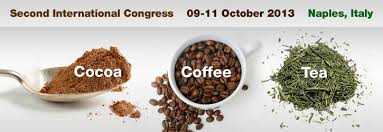Daglia M.1, Mannina L.2,3, Sobolev A. P.3, Curti V.1,4, Coppo E.5 , Marchese A5. 1Department of Drug Sciences, University of Pavia, Pavia, Italy. 2Dipartimento di Chimica e Tecnologie del Farmaco, Sapienza Università di Roma, Rome, Italy. 3Istituto di Metodologie Chimiche, Laboratorio di Risonanza Magnetica “Annalaura Segre”, CNR, Rome, Italy. 4Department of Earth and Environmental Sciences, University of Pavia, Pavia, Italy. 5Microbiology Unit DISC, University of Genoa, Genoa, Italy. E-mail: maria.daglia@unipv.it Epidemiological studies have suggested that green tea consumption is inversely associated with the risk of developing cardiovascular diseases, stroke, some forms of cancer, and diabetes. Green tea possesses another important property in fact it shows in vitro antibacterial activity against a wide spectrum of Gram positive and Gram negative bacteria. As regards the components responsible for the antibacterial activity, it has been demonstrated that the main green tea catechins (EGCG, ECG, EGC and EC) are active at nano-molar levels and most of these compounds have been found to be more active than antibiotics, such as tetracycline or vancomycin, at comparable concentrations [1].
Besides in vitro investigations, a number of epidemiological studies suggests that green tea and its active compounds could protect against bacteria causing foodborne diseases. Nevertheless, existing data on experimental animals and humans are inconsistent and limited and therefore the crucial aspect of the antibacterial activity of tea is the translation into clinically relevant strategies. To understand the possible beneficial effects of green tea catechins against human infections after oral administration, it is essential to determine their metabolic fate and therefore their bioavailability. The first aspect to be studied is the impact of gastroduodenal digestion [2].
In view of a future clinical application of tea and/or its active components, it seems very important to study the effect of digestion on green tea metabolites and therefore on its antibacterial activity that, to our knowledge, has not been investigated, yet. These considerations prompted us to study the metabolic profile of green tea catechins and the antibacterial activity of a commercial Chinese green tea sample, before and after in vitro simulated gastroduodenal digestion.
The antibacterial activity was determined against several strains of Staphylococcus aureus, one of the most common pathogen responsible for community and hospital-acquired infections, and a leading cause of sepsis worldwide. A untarget NMR-based methodology [3] to monitor the green tea metabolite profiling together with RP-HPLC-DAD-ESI-MSn method to determine the catechins content before and after in vitro simulated digestion was proposed.
References
[2] Neilson, A.P. et al. Catechin Degradation with Concurrent Formation of Homo- and Heterocatechin Dimers during in Vitro Digestion. J. Agric. Food Chem., 2007, 55, 8941-8949. [3] Mannina, L. Applications of NMR-metabolomics to the study of foodstuffs: truffle, kiwifruit, lettuce, and sea bass. Elecrophoresis, 2012, 33, 2290-2313.

















